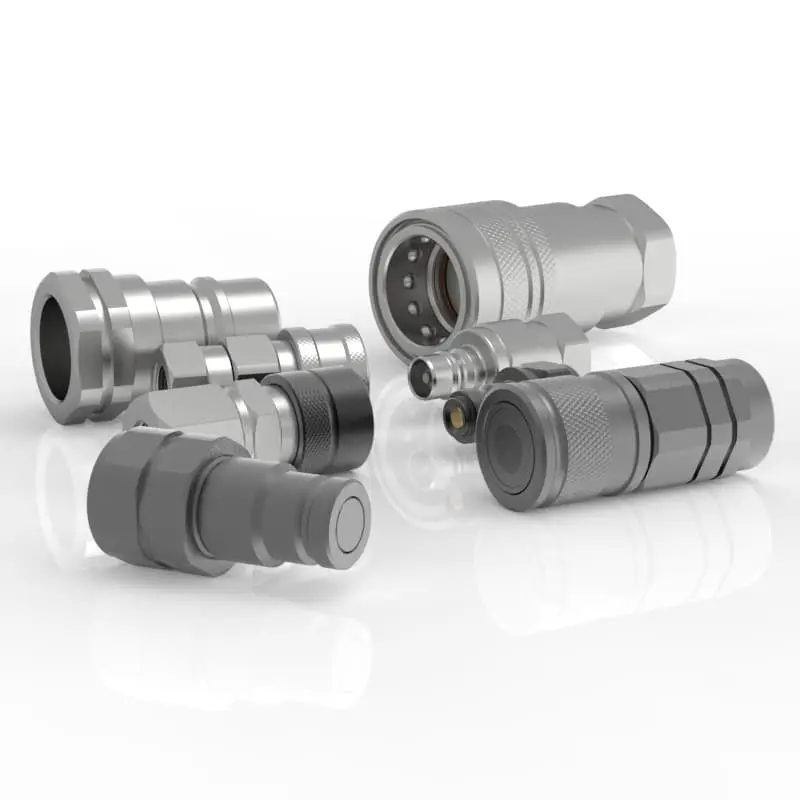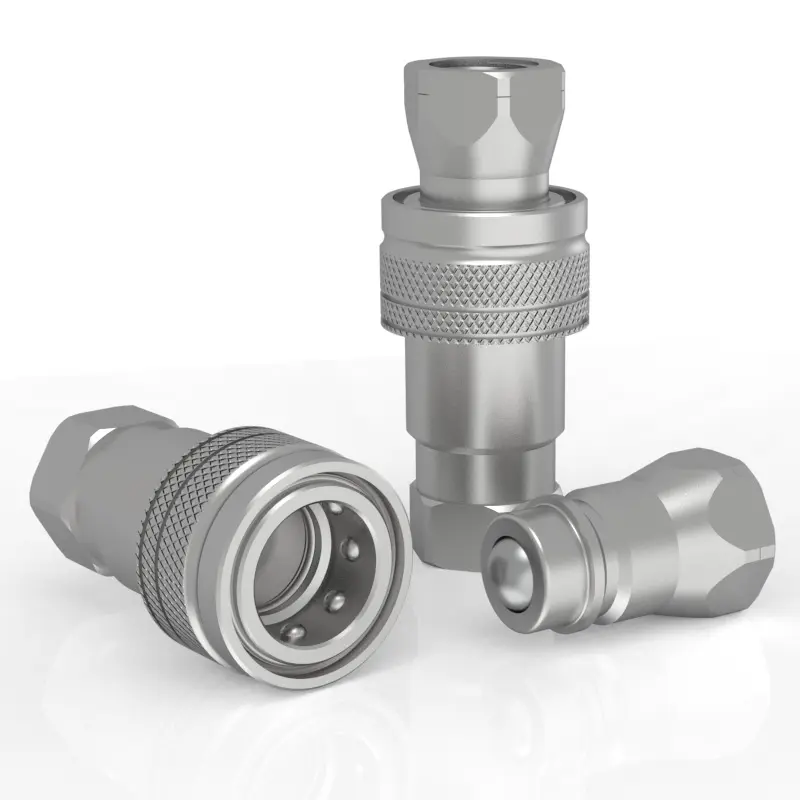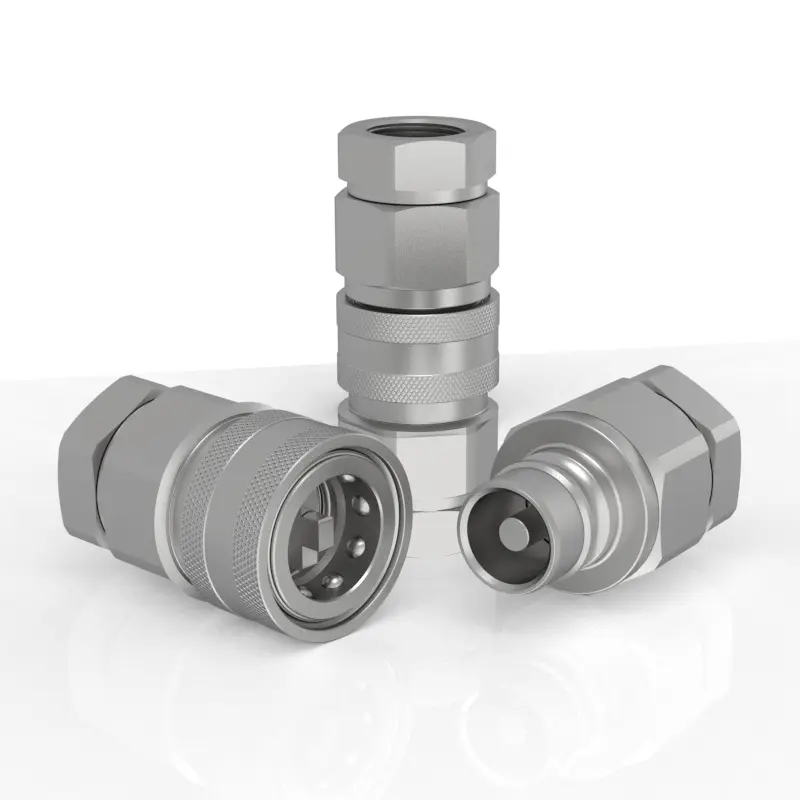
Push To Connect Quick Couplings
Push-to-connect quick couplings are designed to simplify the connection and disconnection of hydraulic, pneumatic, and fluid systems. And the push to connect design are widely used in hydraulic quick couplings. These couplings allow for fast, easy, and secure connections with minimal effort, improving efficiency and reducing downtime.
Push to connect is easy to operate to connect and disconnect, and They are also divided into different designs. Flat face quick couplings, ball-lock quick couplings and push-pull quick couplings.
Flat face quick couplings actually use a ball-lock structure inside the female body to lock the male coupler’s groove of the upper section. However, because of their flush face design, people usually name them flat face quick couplings. To connect them, you only need to align the male coupler with the female coupler and push the male into the female to connect directly. There is usually an design that turns the sleeve to prevent accidental disconnection. Disconnection is also very convenient. You only need to align the lock-pin and pull the sleeve on the female body. The male coupler will automatically pop out of the female body and disconnect.
The Ball-lock quick couplings usually means the ISO A, ISO B, and some other quick couplings designed with the similar structures. When the connect them, need to actuate Push Sleeve, then push the male coupler into the female, and then release the sleeve, the balls will lock the male couplers. And disconnect the quick coupling, only actuate the push sleeve, it will be disconnected easily.
The Push Pull design is an updated design, they also ball-lock deisgn, but when you connect and disconnect, don’t operate the female coupler, but just push the male into the female coupler to connect and pull the male coupler from the female coupler to disconnect. And they won’t disconnect accidentally. When connected or disconnected, it’s the user’s push and pull action that drives the sleeve or the internal structure to disconnect. They are a newer structure that is more convenient to operate than ordinary ball locks.
Classification and Series of Push to Connect Quick Couplings

FF Series
The ISO 16028 Standard Flat Face Quick Couplings

FF90 Series
90° elbow in the hydraulic circuit, such as digger booms.

FFC Series
Replacement cartridge couplers for the faster 4BD4FH/4BD4FI and our MP Series

FFHP Series
700 Bar High Pressure Flat Face Quick Coupling, special for high pressure hydraulic tool applications

FFP Series
Under Pressure Connect Flat Face Quick Coupling – Only Male Coupler

FFS Series
stainless steel flat face couplers incorporate all the benefits of the carbon steel FF Series couplers

IA Series
ISO A Quick Coupling Made to the ISO 7241:2023 Series A Standard

IA2 Series
ISO A Quick Coupling in our product list. We redesign similar appearance with Faster ANV Series

IA3 Series
special appearance we designed is similar with SafeWay S56

IAS Series
tainless steel ISO A couplers incorporate all the benefits of the carbon steel IA Series coupler

IAP Series
ISO A female couplers push-pull design. Replacement for John Deere JD AL166181

IAPP Series
ISO A Push Pull Design Quick Couplings 1/2″ size also meet ISO 5675, female coupler push pull design

IB Series
ISO B Quick Couplings ISO 7241 Series B standard, providing a reliable and versatile solution

IBB Series
brass ISO B couplers incorporate all the benefits of the carbon steel IB Series

IBS Series
stainless steel ISO B couplers perfectly suited for corrosive fluids

IBS2 Series
stainless steel ISO B couplers perfectly suited for corrosive fluids

AGP Series
ISO 5675 standard Agricultural Poppet valve couplers

AGB Series
ISO 5675 standard Agricultural Ball valve couplers

HPC Series
interchangeable with Parker TC Series high-pressure hydraulic applications

BTC Series
ultra high prussure quick couplings are primarily used in bolt tensioners

H Series
US MIL-C-51234 Standard, Snap-tite H Series Interchange

HSP Series
Nitto HSP Cupla Interchange Low pressure loss aracteristic suits hydraulic equipment applications
